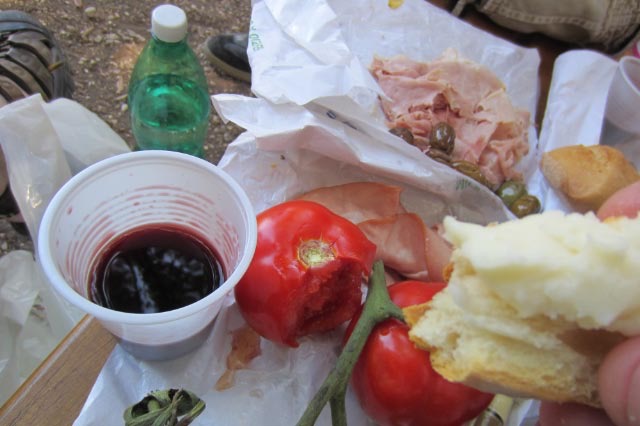
Have you ever engaged in a great, huge project on your dining room table, or your office desk, or the kitchen counter and found that you have left a bit of a mess behind? Have you found your desk full of piles, somewhat ordered perhaps and yet quite full of order and dis-order – both? I have. I have come to my desk to find neat piles of papers with the receipts pile over here for the expense report I need to file, the stack of notes for the book on Friendship I want one day to write, the list of things to do this next week sitting there like a waiting butler, and the stack of notes I took at a workshop which need to be transcribed and to find a home in files somewhere. I like a clean desk. I know they say it is a mark of insanity but I like, a clean desk. So I order, arrange, file, dispose, staple, re-file and finally everything is tucked away in its ordered place and it is time to step out into the day and get to work.
In a way, even my kitchen counter is a sort of food-desk-top, but filled with foods rather than paper, and yet the foods still need to be grouped, ordered. Right now my kitchen “desktop” counter is piled with onions, sauterne, bay leaves, thyme, butter and non-stick spray because those are the items I will need today to set the crock-pot to its day-long work of caramelizing onions. Once in individual onion-goop-portions, the caramelized onions can be stored in glad bags all winter and will provide a quick meal with chicken or beef stock and some bread with melted cheese. The classic French Onion Soup will employ beef stock with bread and gruyere cheese while the same bag of onions with chicken stock, sage and bread covered in cheddar will provide English Onion Soup.
My mind is like that too. Like my work-desk and my letter-writing desk at home and my work desk at work and my computer lap-top “desktop” and even my kitchen counter top there are all sorts of surfaces in my mind. They need to be seen, gently bowed to, ordered, prioritized.
This is why one of the three morning hours I keep is for thinking. Each morning I try to take three hours. Sometimes it is three half hours and sometimes three quarter hours, but regardless of length (and I prioritize sleep so if i have a short night sleep I shorten the three “hours” as needed to accommodate more sleep) I try to keep three portions of a morning as part of my spiritual practice: Time to pray, time to think, time to walk.
The prayer time is usually wordless meditation on a cushion in which I focus on my breath and set aside thoughts. The thought time is like managing the “desktop” of my mind. ask myself a lot of questions: Why did I do that? Why did she say that to me? What shall I do with this project? What letters need writing? What friendships need pruning, pulling or watering in my friendship-garden? What have I done wrong? What have I done right? What follow-up is needed to yesterday’s work? What new thing might be birthed today? Why did that project just die when I thought it was wonderful? Why is this project thriving when I thought it was a bad idea? What pain is in me? What loss? What hopes?
Then there is the walking time and that time is usually listening to a spiritual book or some podcast like On Being (my favorite NPR radio show on the spiritual life) so that as I walk I can learn and be challenged.
These three hours, order my desktops. We pray. We live, We sleep. There really is no such thing as “the spiritual life” only life. And how we live that life, and what practices we employ to manage that life are very important. These are mine. What are yours? How will you protect them once you find them?

